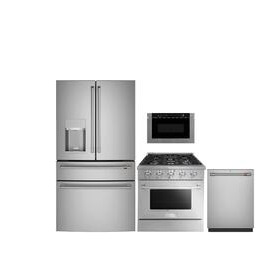How to take care of my microwave?

Microwaves are often regarded as one of the most important household appliances. It's possible that you just got a new one, you already have your cherished micro at home, and you want to take better care of it, or it's possible that now that a Sale is getting closer, you're thinking about getting a new one and you want to take proper care of it. In any case, you want to make sure that you take proper care of your micro. You will be aware of the proper procedure after reading this article. Regular cleaning, at least once every three days, is essential for maintaining the cleanliness of a microwave oven. Check out this step-by-step manual on how to clean a microwave when you see splatters, greasy fingerprints on the controls, or food that has been trapped in the appliance.
It is possible to clean a microwave using materials that are often found in households, such as all-purpose cleanser, baking soda, dish soap, or white vinegar. Just be sure to steer clear of chlorine since, according to the manufacturer's warnings, it has the potential to break down the plastic on the interior of the device and cause long-term harm.
How to clean the inside of a microwave

Splashes of water and lingering smells may give your brand-new microwave an unappealing appearance. To thoroughly clean the inside of your microwave, including the plate, do the cleaning process in the following order:
- In a glass container, combine 1 cup of water and the juice of 2 lemons, 1 lime, or 1 orange. White vinegar may be used instead of citrus.
- Place the container inside and set the timer for 3 minutes on high power, or until the liquid boils and the window mists up.
- Allow 5 minutes for cooling before opening the door, removing the container, and wiping it off with a sponge.
How to clean greasy microwave doors
These hints and recommendations may help you clean the outside of your microwave as well as the inside, removing stains and grease that may have accumulated there:
- With a sponge dampened with water and baking soda, clean the whole door, including the edges and both sides. To rinse, wipe clean with a moist cloth or sponge.
- Use a 50/50 solution of vinegar and water to clean greasy windows. Rinse well and pat dry.
- Clean the microwave door using an all-purpose grease remover or a soapy combination of water and dish detergent if there is a lot of oil and spatter. To prevent the cleaner from getting into the ventilation openings, apply it using a cloth. If required, rub with a non-scratch sponge.
- To prevent harm, never spray electronic controls directly with the cleaner. Clean the controls after applying it on a cloth.
How to get rid of microwave odors

When you prepare food that has a pungent or overpowering odour in the microwave, the fragrance will come back as soon as you switch on the oven again. This indicates that eliminating the odour as soon as possible is the best course of action:
- The oven may be ventilated by leaving the door open; alternatively, a container of baking soda can be placed inside the oven with the door closed in order to absorb any mild aromas that may be present, such as those that result from cooking spicy cuisine that has a strong scent.
- Clean up any residue that's been left behind, and then place an odor-absorbing gel inside the container until the next time you use it to get rid of harsh scents like burned popcorn.










